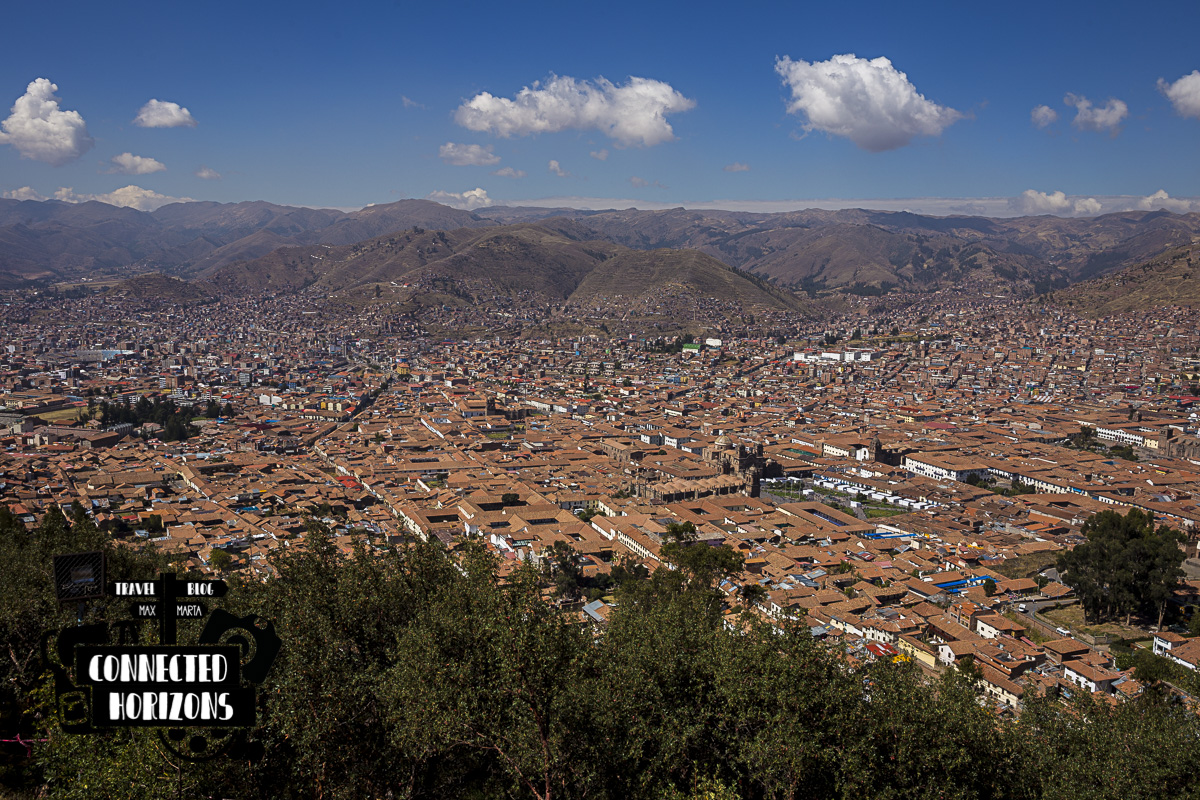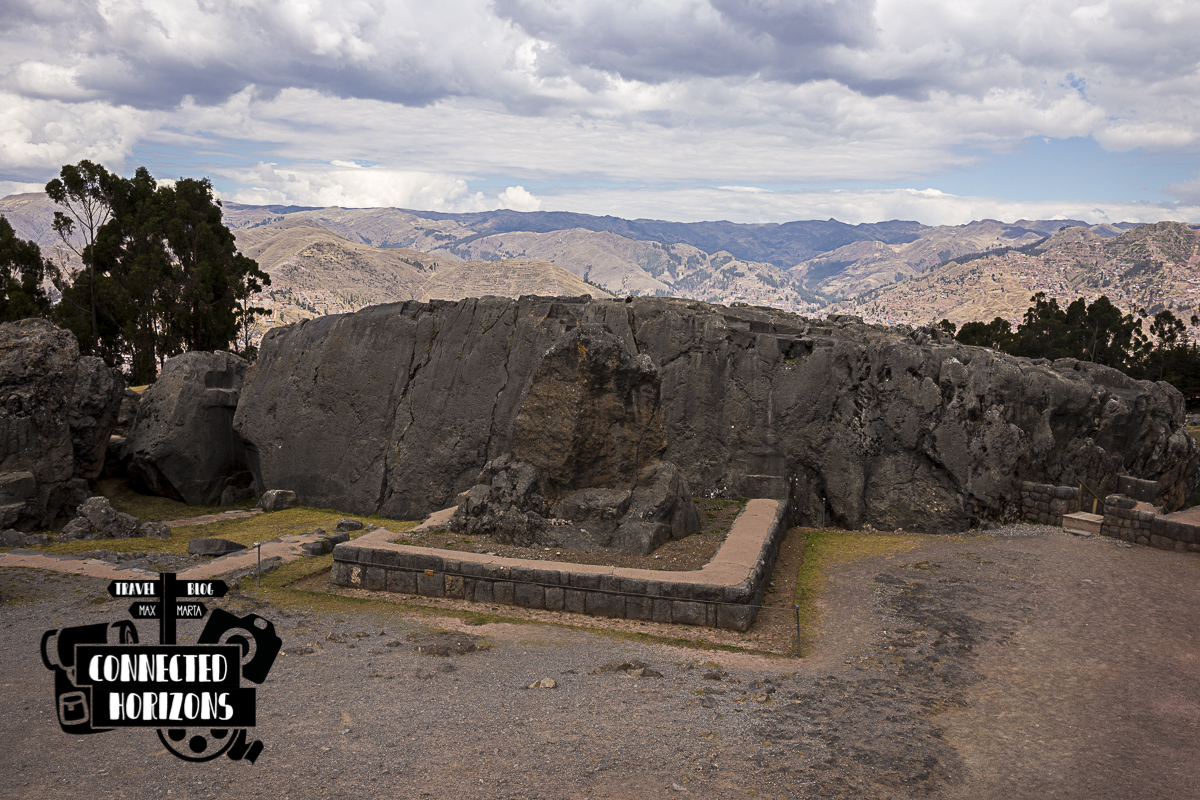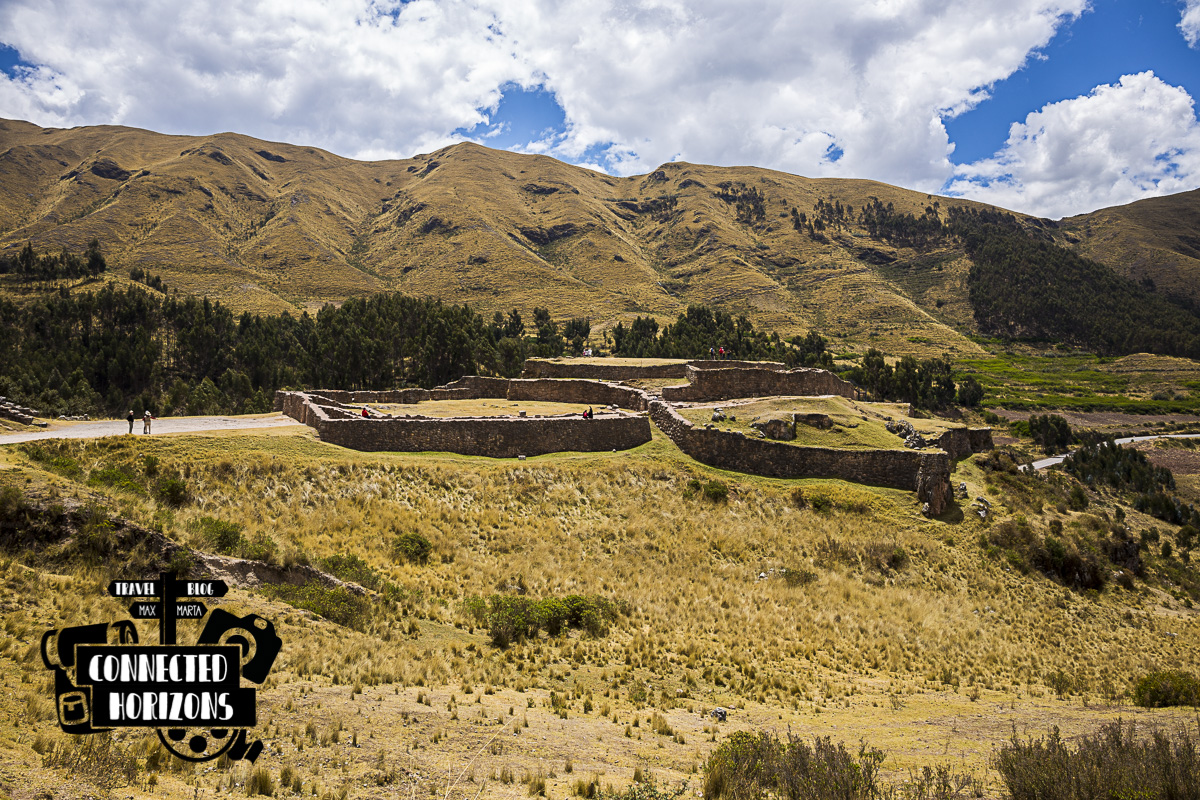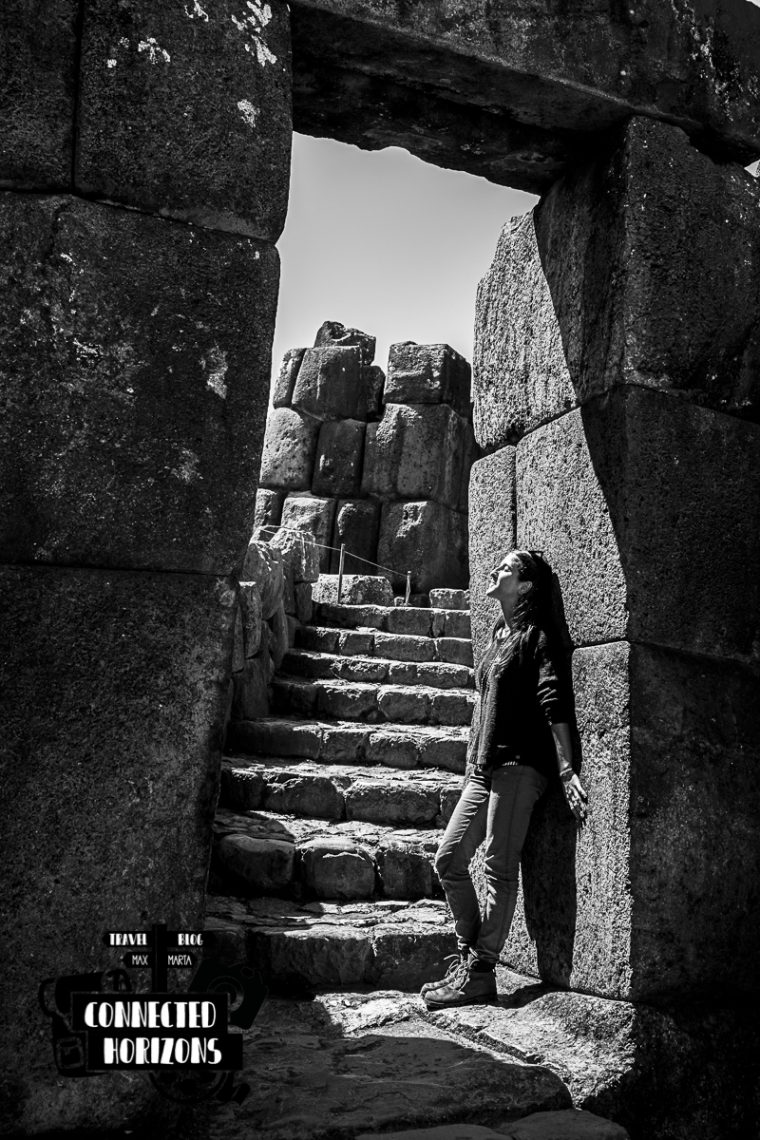Yesterday the journey through the north-west area of the sacred valley was surely a long one but for today we’re planning to do a shorter route. The idea is to visit all the important archaeological sites just on the northern city limits of Cusco, these being Sacsayhuaman, Q’enqo, Puca Pucara and Tambomachay.
Cusco to Sacsayhuaman
Getting to this site from Cusco centre is pretty straightforward as you just need to head north on the main road. Just before the site, we also take a chance to make a stop at the mirador del Cristo Blanco: don’t miss it if you wanna enjoy some beautiful views over the city.
 View from the mirador Cristo Blanco
View from the mirador Cristo Blanco
Once at the site, it is clear that there are many sections each of which will take some time to visit. In the main part there’s a small plateau surrounded by tall walls of huge cut stones, you can see some fundaments of houses, temples and further up a hill you can also see what is known as the Inca Throne a.k.a. the sacrificial area. Additionally, this site has also some tunnels which connect a couple of places that you can go through but be aware, you’ll be in walking in complete darkness if you don’t bring a torch!
Visiting the site up and down doesn’t take us more than 1h30min but if you decide to get a guide (40 soles) it might surely take you more.
Sacsayhuaman to Q’engo
Literally just 2min away form the entrance of Sacsayhuaman, we find the entrance to our second stop: Q’engo. This time, the site is consistently smaller and to some extent less “impressive” but definitely still worth a visit.
 Upper part of Q’engo
Upper part of Q’engo
Here was supposed to be the place were sacrifices and rituals used to happen in the past as this is what is known as Huaca. At the site there are two main structure: a lower which is pretty much just external walls and then a higher one, the most interesting and well-conserved. In fact in the higher one is also where you can see, on top of many “rooms”, also a unique underground shrine.
 Lower part of Q’engo
Lower part of Q’engo
At the site we spend more or less half an hour wandering around but it could easily take you less than 15min to see the complex throughly.
Q’engo to Puca Pucara
Following the road for a little more, we reach the site of Puca Pucara which did look very similar to the just seen Q’engo. Even though the two might look similar, the purpose of this site is complete different to what we were looking at less than half an hour ago. Differently to Q’engo , this site doens’t really involve rituals or ceremonies but instead it is closely related to the defence of Cusco.
 View from Puca Pucara from the road
View from Puca Pucara from the road
Many terraces, strong walls, staircases and much more are all things related to what is thought to be a fully functional fortress (did you know that pica pucara meant Red Fotress)? Once again, the site is nothing big and it doesn’t take us longer than 15min to walk all around it. Still is surely worth a look!
Puca Pucara to Tambomachay
After the quick visit to the fortress, our last stop for today is the site of Tambomachay (also known as Bath of the Inca). Differently from anything we came across before, even though archaeologist are not completely sure, it is thought that this place served as a huge spa complex for the Incas belonging to the elite groups. In other words, some kind of relaxing resort where the most important people in the Inca society could talk and discuss about the most important matters.
This place too is nothing huge to be visited. In fact, after the short 10min walk along the river you get to a small opening where you can see small canals and waterfalls, all located within a the one-and-only structure which tourists are allowed to see. The story of the place is surely fascinating but once again, don’t expect to spend more than 30min checking out the surroundings.
PLANNING A TRIP TO PERU? CHECK MORE POSTS BELOW!
[pt_view id=”8828c57k10″]





